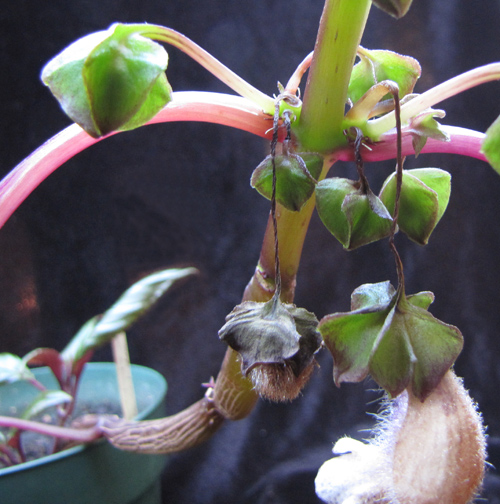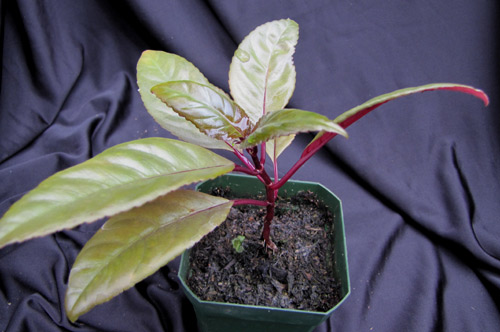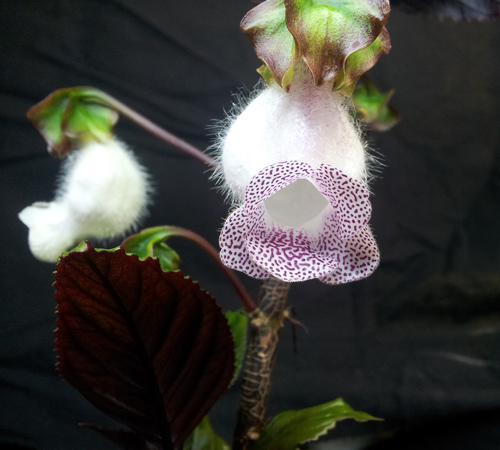Sinningia barbata is by no means the easiest sinningia species to cultivate. However, the variety 'Tancredo Neves' is exceptional in the difficulties it presents. It is not as impossible as S. canastrensis, but nothing is.
The attractions are the wine-dark glossy foliage and the spotted flowers.
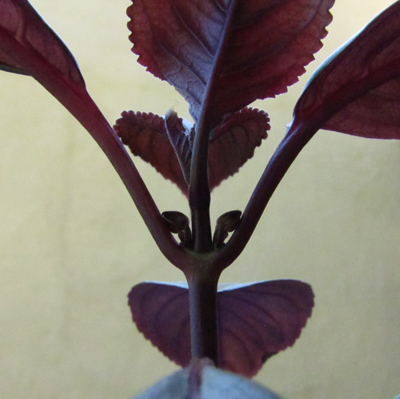
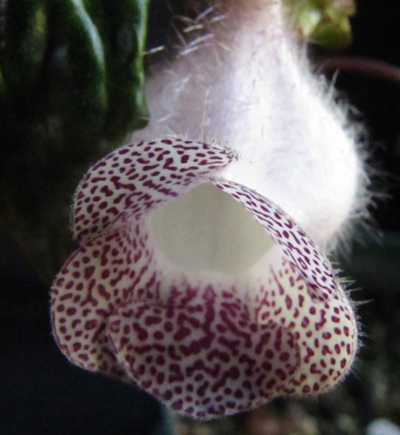
This flower has the same L-shape as can be seen on the Main page for S. barbata. However, unlike the standard variety, this variety has purple spots on the flower, as if it thought it were actually S. guttata. But it's not.
